Regulatory signs
Mandatory and prohibited signs
Prescript signs grant or forbid something. For whoever participates in traffic must also obey its commandments and prohibitions. Because of these two functions, the regulation signs can also be divided into the two categories of mandatory and prohibited signs. Mandatory signs can usually be recognized by their round shape and blue color. Signs on which a ban is expressed are normally round and have a red frame. Here the road user is signalled "Attention, here you must abide by a law".
Good to know
The regulatory signs are clearly marked. Because every road user must be able to perceive them quickly and react to them.
There are also commandments and prohibitions without the presence of signs. Inner cities are offered 50 km/h and out-of-town 100 km/h (of course only if no other signs can be seen).
Prescribed signs are usually valid until they are cancelled by an "end of the prohibition and bidding zone" sign.
[Translate to English:] Bedeutung
[Translate to English:]
Vorschriftsschilder weisen jeden Verkehrsteilnehmer gleichermaßen auf ein Gesetz hin, dass unbedingt beachtet werden muss. Sie sorgen dafür, dass die Sicherheit im Straßenverkehr erhöht und das Zusammenspiel aller Verkehrsteilnehmer vereinfacht wird. Auch wenn es mancher Autofahrer so empfindet: Sie sollen niemandem den Fahrspaß rauben.
What am I supposed to do?
Quite simply: You may not violate the prohibition of prohibition signs. If, for example, you still overtake if you are banned from overtaking, you risk fines and possibly points. With a bid sign it is important to adhere to the regulation.
In plain language this means: A prohibition sign tells you what you are not allowed to do and a prohibition sign tells you what to do.
The bid or prohibition zone always applies directly from the sign. As soon as you notice it, you should follow the prohibition or commandment.
Fines for non-compliance
The amount of the fine is very variable for the regulatory characters. So the fine can start at 10€ if you don't respect the speed limit, but can increase up to several hundred Euro and other penalties. In principle, the amount of the fine depends on the seriousness of the offence. This also means that certain signs, the non-observance of which could have far-reaching, if not even fatal consequences, automatically have a higher penalty than others (e.g. STOP sign at intersection).
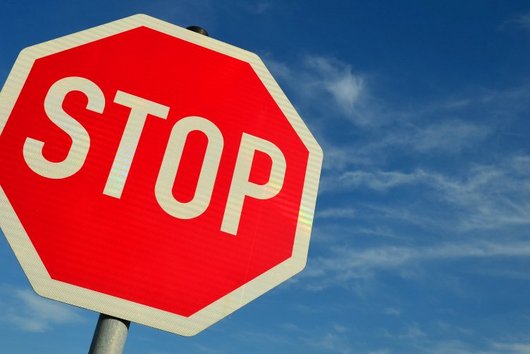
Parking and stopping bans
Stopping and parking bans indicate that parking is not permitted in streets where they are located, or may be stopped at certain conditions. Conditions can be the type of motor vehicle, the time, resident / stranger, type of parking/stopping or a general time window. The prohibited zones shall be terminated either by a sign of the type "end of prohibited zone", by another regulation or by an intersection on the same side of the road.
What is important about this type of prohibition is that it only applies to the side of the road on which it stands.
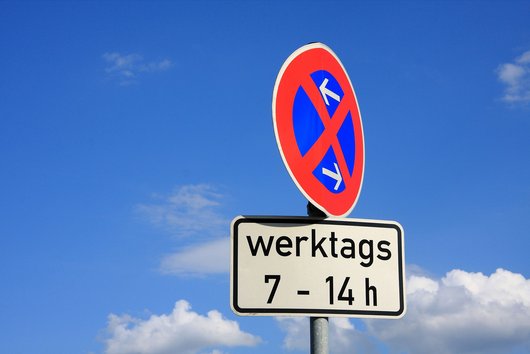
Prescribed direction of travel
These mandatory signs are pointing the way. That means they're indicating which direction you need to go. Examples are the entrance and exit signs at roundabouts, the signs on traffic islands that show you to drive past them on the right or the blue one-way street sign.
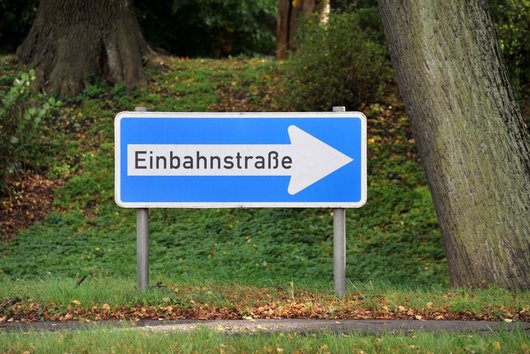
Special routes
Special route signs are mandatory signs which state that cyclists, riders or pedestrians must use the routes built for them, while other road users are prohibited from using them.
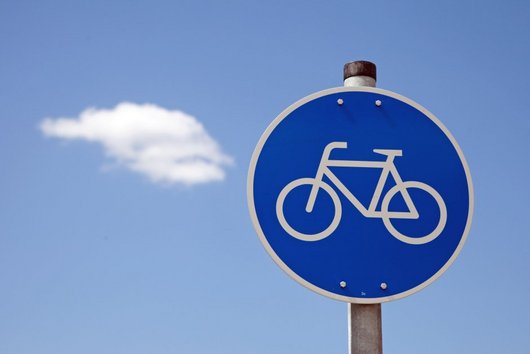
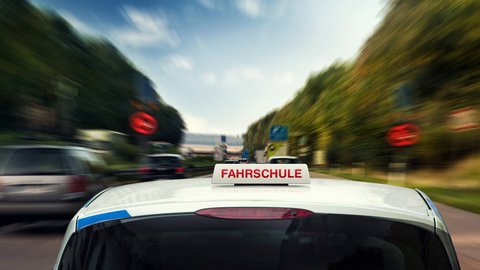
Find your driving school
You want to know more and get behind the wheel as quickly as possible? Then discover now in our search your driving school, which prepares you both theoretically and practically exactly according to your needs for your driving licence.